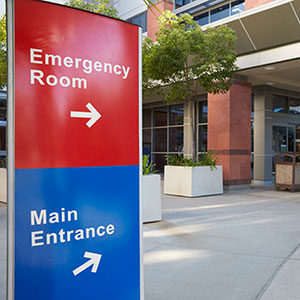CMS clarifies patient ligature risk policy
The Centers for Medicare & Medicaid Services (CMS) recently issued a memo clarifying its ligature-risk policy, which pertains to environmental safeguards for patients at risk of harm to self or others. The agency expects to release comprehensive guidance for state survey agencies and accrediting organizations in the next six months. Meanwhile, the accrediting body or state agency has authority to determine the level of citation for ligature deficiencies based on its expert opinion, CMS states. According to the clarifying memo, the focus for a ligature-“resistant” or ligature-“free” environment is primarily aimed at psychiatric hospitals and units, and does not apply to nonpsychiatric units of acute care hospitals.
Joint Commission issues 2018 NPSGs
The Joint Commission recently published its 2018 National Patient Safety Goals for hospitals, ambulatory health facilities and other types of care providers. Among the hospital and critical access hospital (CAH) goals that affect the environment of care is using alarms safely. Hospital goals also include identifying patient-safety risks with regard to suicide. Goals for hospitals, CAHs and ambulatory facilities also include hand-hygiene measures.
NACCHO releases standards for violence prevention
The National Association of County and City Health Officials (NACCHO), representing nearly 3,000 local governmental health departments, has developed voluntary standards of injury and violence prevention (IVP) programs in collaboration with the Safe States Alliance. They are the first step toward providing guidance on the design and implementation of a model IVP program for Level I and Level II trauma centers. The standards are designed to support the IVP professional and hospital leaders with tangible ideas for expanding or strengthening programs at all levels, moving beyond minimum requirements.
Joint Commission revisions continue for LS and EC
As a result of the Centers for Medicare & Medicaid Services’ adoption of the 2012 editions of the National Fire Protection Association’s NFPA 101, Life Safety Code, and NFPA 99, Health Care Facilities Code, the Joint Commission has revised additional EC and LS requirements for the hospital, critical access hospital, hospice and ambulatory surgery center deemed-status programs. These revisions, which became effective Jan. 1, address testing of emergency lighting systems, inspection and testing of piped medical gas and vacuum systems, updating pertinent NFPA code numbering in references and adding more specificity to existing elements of performance.
New edition of Standard 170 becomes available
The 2017 edition of American National Standards Institute/ASHRAE/American Society for Healthcare Engineering’s Standard 170, Ventilation of Health Care Facilities, is now available. The 2017 edition incorporates the 12 published addenda to the 2013 edition and has several significant changes, including the addition of a new type of examination room with lower requirements for less-acute applications and higher requirements for higher hazard exhaust airstreams. The standard also has been reorganized into three sections: hospital spaces, outpatient spaces and nursing home spaces. These changes were made to align the standard with the forthcoming Facility Guidelines Institute’s 2018 Guidelines.





